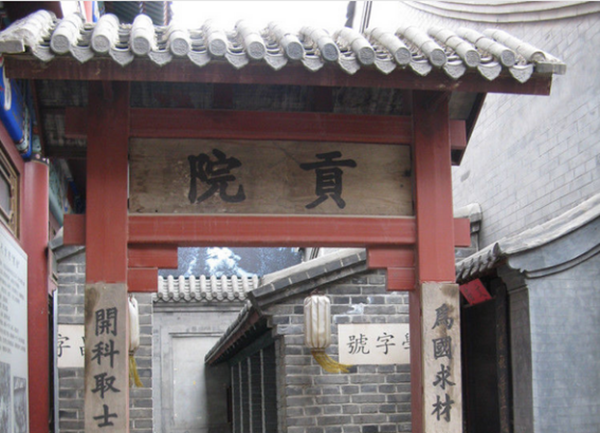Gongyuan or The Imperial Examination Center was the site for examinees from different parts of the country in ancient China. Gong means talents recommended to the emperor of the country through lower-class examinations. Yuan means a yard. The Imperial Examination Center was originated from the Tang Dynasty. Currently the former sites of Gongyuan left over in China include Jiangnan Gongyuan, Beijing Gongyuan, Dingzhou Gongyuan, Beichuan Gongyuan etc, and the most prominent site among the many was Jiangnan Gongyuan in the years of ancient China.

Standing north of Jiangguomennei Street is the Chinese Academy of Social Sciences, which is near the hutongs named Gongyuan East Street, Gongyuan West Street, Gongyuan Toutiao, Gongyuan Ertiao, Gongyuan Santiao and so on. Where is this? No doubt, this is Gongyuan, the Imperial Examination Center.
The Imperial Examination Center of the Ming and Qing Dynasties was initially established during the 13th year of Emperor Yongle’s reign in 1415. At that time the city walls and the Forbidden City had not been accomplished yet and not enough building materials were in store. And so the Imperial Examination Center was constructed only by using reeds and wood planks. The surrounding walls were made of brambles. The gate of the Imperial Examination Center was named “Dragon Gate”, which means carp jump into the Dragon Gate. In Chinese a carp that jumps into the Dragon Gate can become a dragon which symbolized the highest ruler---emperor of the country in the past times. In the Imperial Examination Center there are thousands of rooms where examinees entered and sat in the years of ancient China.
Opening hours: All day
Best time to visit: All year
Recommended time for travel: 2 hours
Add: Gongyuan West Street No. 6, Jianguomennei Street, Dongcheng District, Beijing 北京市东城区贡院西街6号贡院6号E座B1
Opening hours: Free




